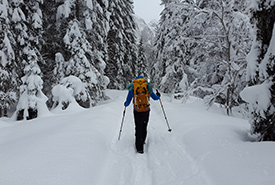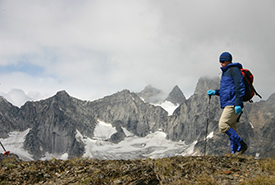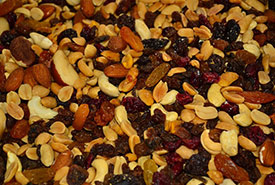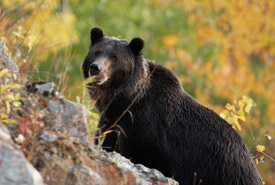How to prepare for your next hiking trip

Hiking is a great choice for enjoying an adventure that contributes to physical and mental fitness (Photo by Simon CC0)
Hiking is a great choice for enjoying an adventure that contributes to physical and mental fitness. Whether you're an expert hiker or a novice, you'll want to accomplish two things: having lots of fun and staying safe. Here are some helpful tips and equipment recommendations for new hikers.
Plan ahead
Not every hike is going to be a trek up Mount Everest, but knowing what you'll be doing and where you'll be going in advance will help minimize unexpected events. Planning a safe hike requires picking a trail, choosing a date and identifying potential hiking companions, using these five steps:
- Determine how much time you have to hike.
- Decide whether to hike solo or with others, the latter of which is generally safer.
- Figure out your hiking level and, if a newbie, pick local spots where you can quickly return to your vehicle if necessary.
- Choose a location by going online and searching by the desired postal or ZIP code or checking maps for natural areas.
- Let someone know when and where you’ll be hiking and your expected return time.
Take the right stuff

The right clothing can make a big difference during a hike. (Photo by Gene's Journey CC0)
The right clothing can make a big difference during a hike, but you don't have to have the fanciest name brands. If you can properly regulate temperature, moisture, comfort and potential friction, you'll be in a good spot.
Many hikers swear by a wicking layer, which draws away sweat. Long sleeves add warmth and help protect against the sun. A lightweight hooded jacket is perfect for daytime and nighttime wear. Depending on the hiking trail and weather, long pants, shorts or rain pants might be appropriate. Others items to consider include:
- sports bra
- quick-dry underwear
- hat or other head covering
- wool socks
- waterproof shoes or hiking boots suitable for the terrain where you’ll be hiking
Beyond any items you need for camping, specific accessories can make your hike safer and more enjoyable. Here are some sure bets for a day hike:
- pocket knife
- sunglasses
- sunscreen
- litter-less snacks or meals
- mini first aid kid with bandages, antiseptic and antihistamine cream
- small waterproof knapsack
- tissues
- phone
- pen and notepad
- camera
- bug spray
- water
- bear spray, depending on where you hike

Trail mix is a great snack to bring with you on a hike. (Photo by Pic Dream CC0)
What’s appropriate to bring for snacks? Almonds or walnuts make a great choice thanks to their protein and healthy food content. Apples, bananas and raisins are good fruits to pack along. Some hikers enjoy beef jerky. Homemade trail mix concocted from dried fruit and unsalted nuts is also popular, but a few granola bars can also substitute as a healthy snack. Make sure any food you bring is properly sealed/stored and that all of your litter is taken back out with you.
Other proactive trail tips
Versatility is often the key to a happy hike. Imagine, for example, that the weather forecast showed 20 C temperatures but it never climbs past 7 C. In addition to toting the right stuff, having a mindset that easily adjusts to change helps create the most enjoyable and safest hiking experience.

Grizzly bear (Photo by Peter Sulzle)
It’s always a good idea to become familiar with the local wildlife. Checking online can reveal the types of critters you might encounter on the trail. Coming face to face to with a bear is not a happy surprise. If you hike in a wooded area, plan on a tick check and a soap-and-hot-water shower as soon as you return home.
Climbing to higher spots is the ideal way to take in great views. However, be sure to take care descending. Shorten your stride or carry hiking poles.
To avoid polluting, take home everything you brought on your hike. Go above and beyond and pick up any trash you spot on the trail.
Following these easy tips can keep you safe while you’re having fun on your hike and set the stage for many future excursions on foot.

